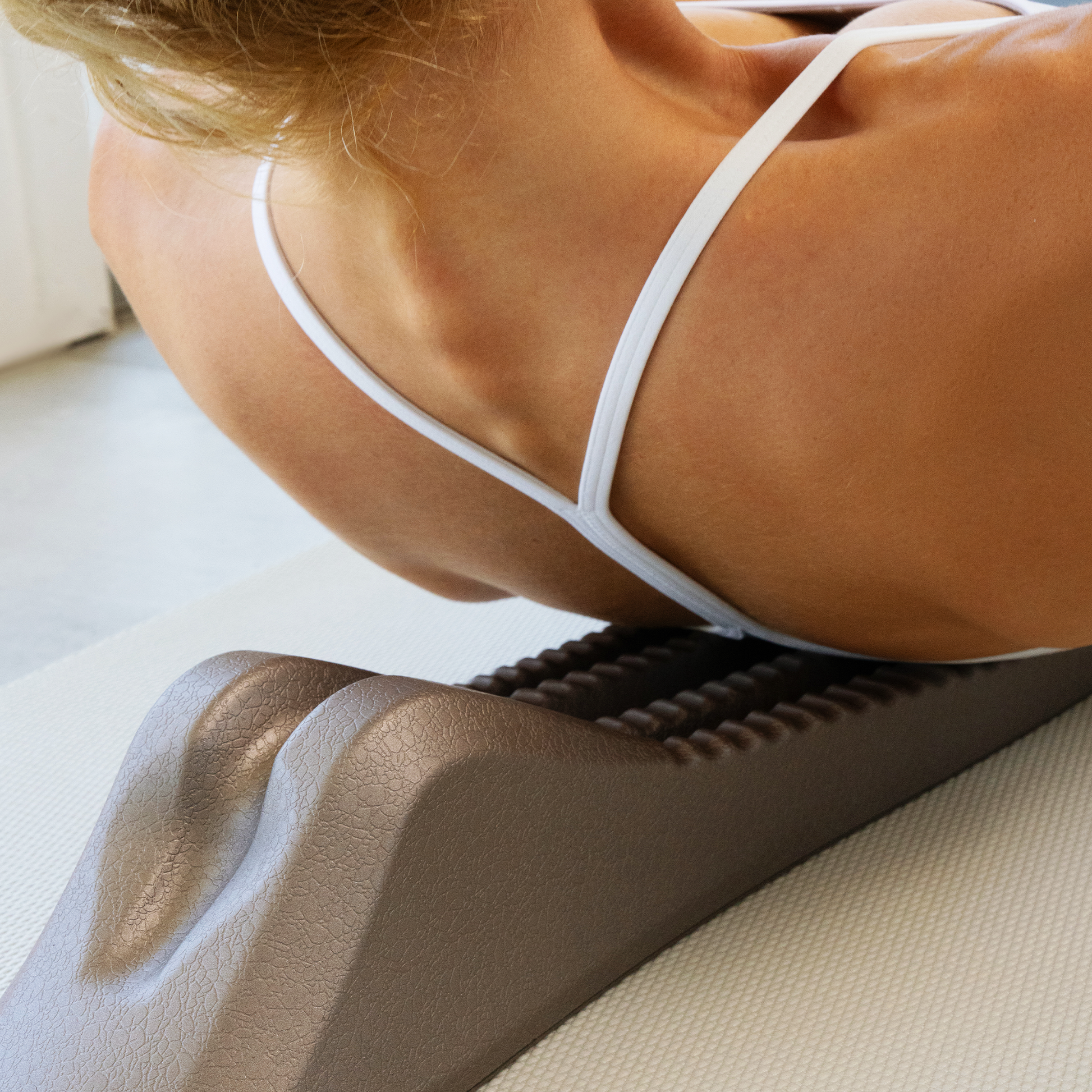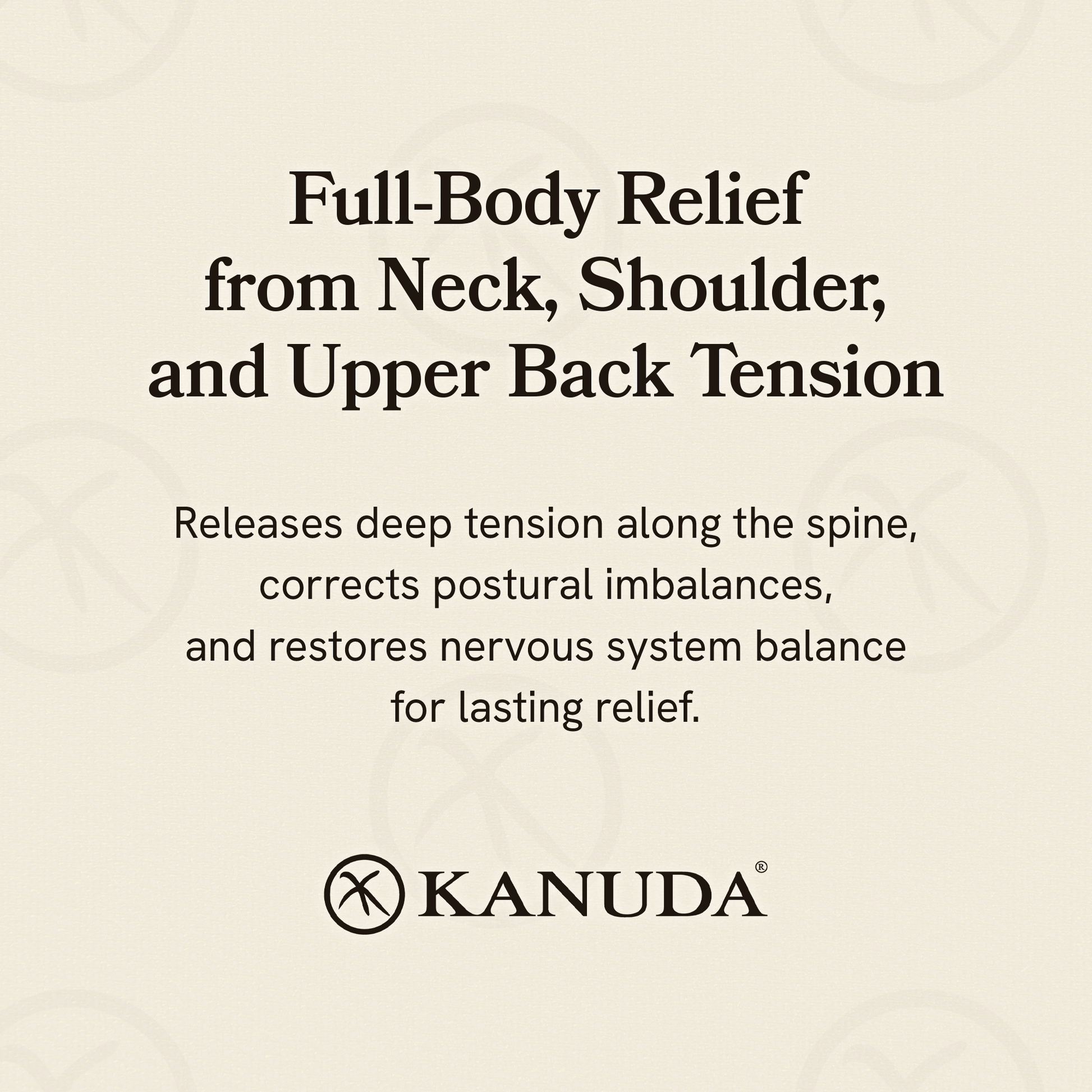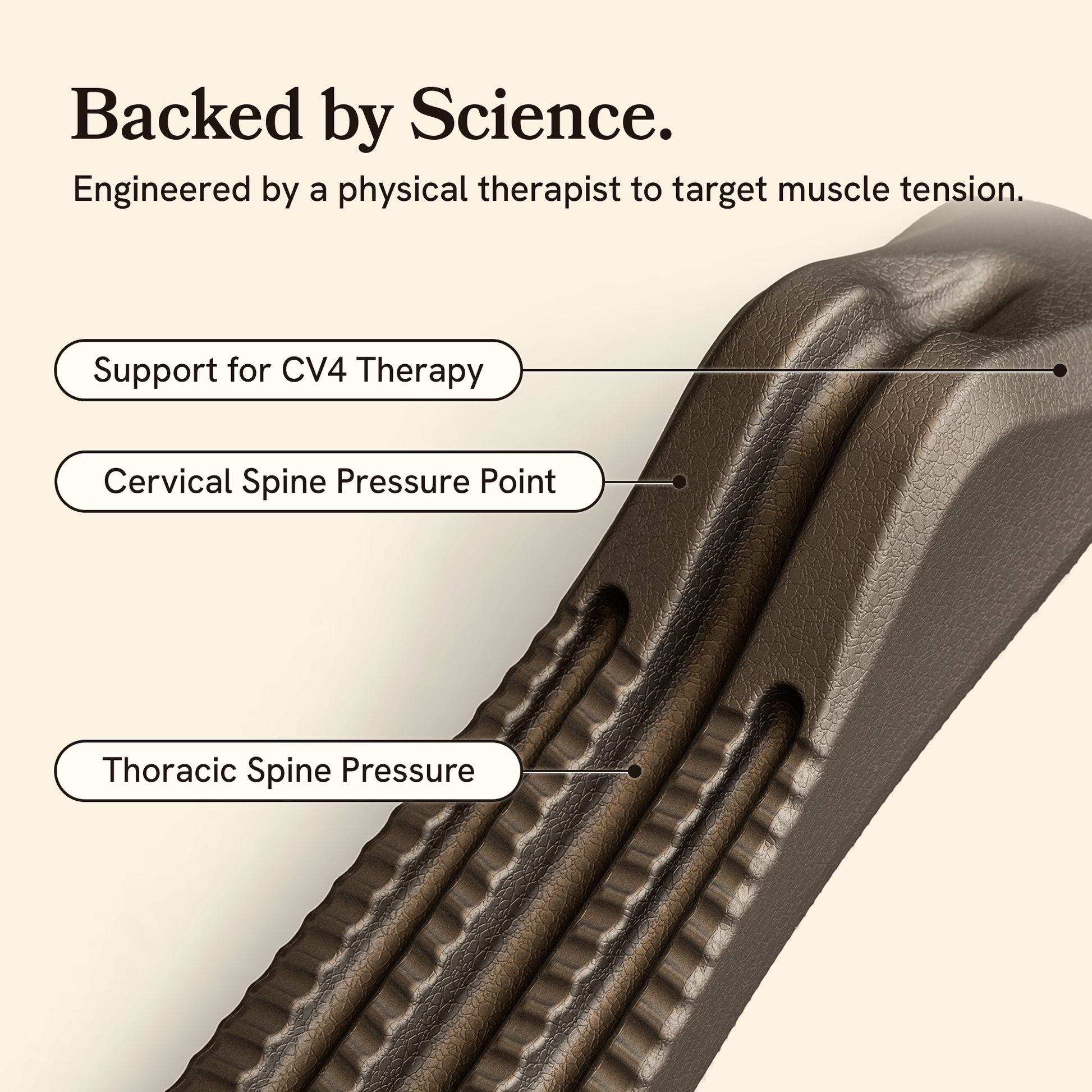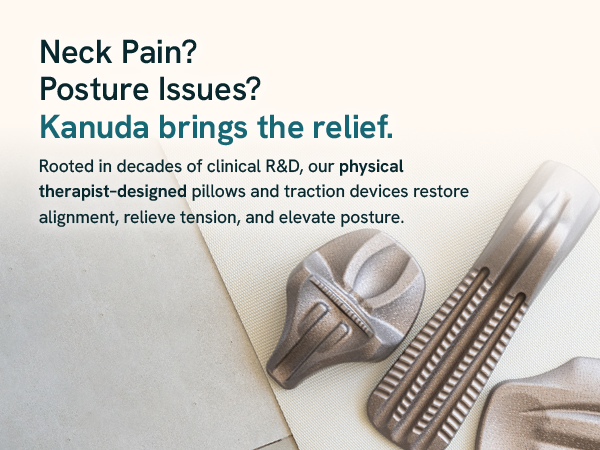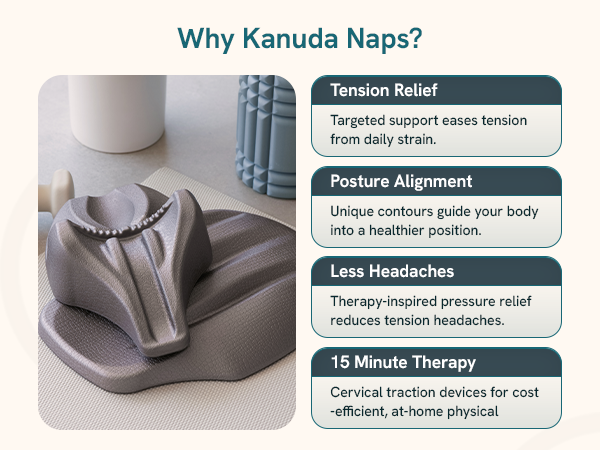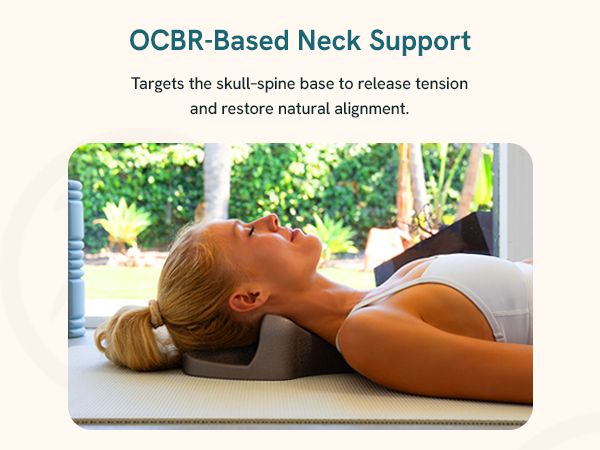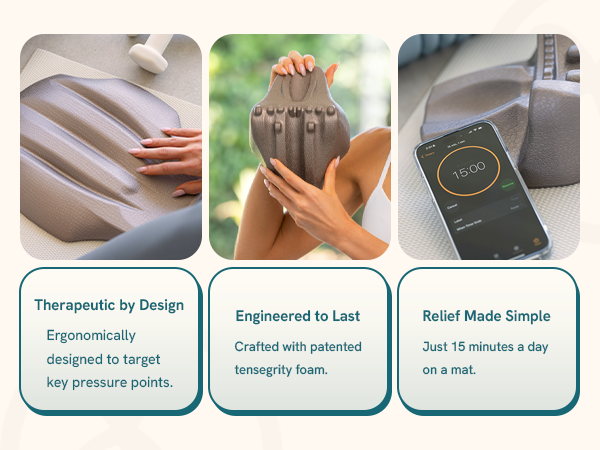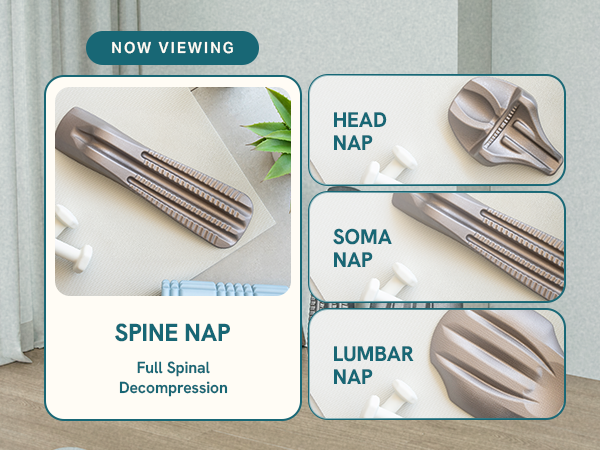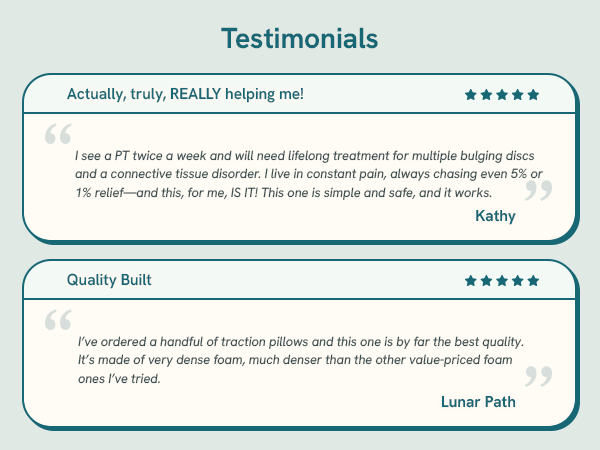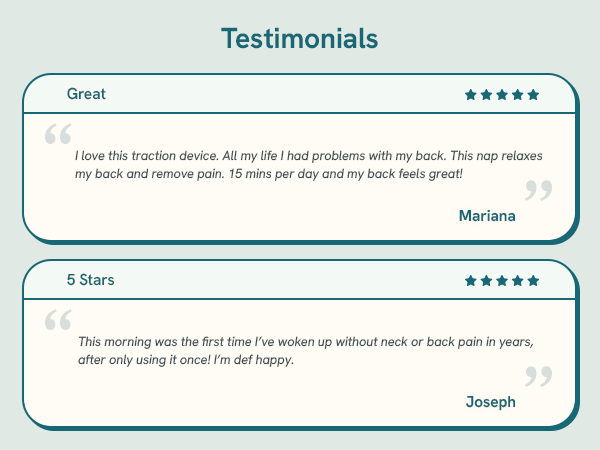Spine Nap : Dispositif de traction pour la colonne vertébrale
Avantages
- Corriger les problèmes posturaux, tels que les épaules affaissées et la posture de la tête en avant
- Détendre les tensions dans les tissus conjonctifs de la tête, du cou, de la colonne vertébrale et du corps.
- Atténuer les douleurs au niveau du cou, des épaules et du haut du dos.
- Rétablir la souplesse du système nerveux autonome
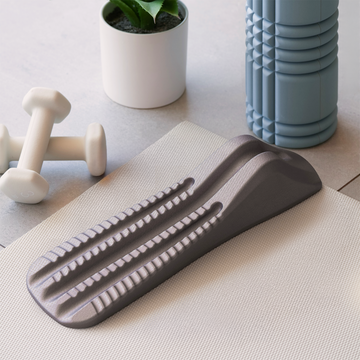
Spine Nap : Dispositif de traction pour la colonne vertébrale
Customer Reviews
Frequently Asked Quetsions
Which pillow is best for me?
For most of our customers, Piano Air will be the product of choice. It is a highly versatile product that fits the need of many and comes with an adjustable height pad to tailor the pillow to your needs.
We recommend Andante for those who prefer slightly firmer pillows.
Allegro for those that have larger physiques (wide shouldered and over 6 feet tall). For more questions, please contact us at hello@kanudausa.com
Do you offer a financing program?
Yes, you can choose to pay with Shopify Pay at check out to pay in full or split your purchase into 4 equal installment. There is no interest, no hidden fees, and no impact to your credit score.
Do Kanuda products come with a free trial?
We believe you should sleep on your pillow to decide if you want it. It can take up to 60 nights for your body to adjust to a new pillow, so if you are not 100% satisfied after the first few weeks of adjustment period, returns are easy.
If you do decide to return the products, please contact us at hello@kanudausa.com, and we will send you a prepaid return label, which you can use to send back to us for a flat $15 return shipping fee. Once the product is received on our end, your original form of payment will be refunded(minus the $15 shipping fee).
Which sleeping positions are Kanuda pillows designed for?
KANUDA pillows are designed specifically for optimal neck alignment for side and back sleeping positions. Our products have also been crafted meticulously to make it easy for you to roll from one side to another as research shows that nearly everyone shifts during the night.
Unfortunately our products are not designed for stomach sleepers. While the stomach sleeping position cannot be avoided for some, it is generally best to sleep on your side or your back to maintain a neutral spine position and avoid taxing your back and neck.
Why are KANUDA pillows pricier compared to other brands?
It comes down to 2 things. At KANUDA, we pride ourselves in our uncompromising focus on helping you sleep better, reduce neck pain, and improve posture. KANUDA’s track record to date lies in its extensive R&D program that has iterated on the most minute details multiple times. In addition, we have spared no expenses to create a truly long-lasting high-quality product. Please learn more about KANUDA products here.
How long does it take to adjust to a new pillow?
While many of our customers immediately feel better upon usage of our pillows, some go through an adaptation period, getting used to the correct posture.
Continue sleeping on the pillow even if it feels uncomfortable at first, give it 1-3weeks and see how you feel. Just like how we all need some time to break a bad habit, give your neck some time to adjust.
How do I clean my KANUDA pillow?
KANUDA pillow covers are easily detachable and machine washable.
How firm are KANUDA pillows?
Kanuda pillows uses a proprietary foam that is specifically designed to support a neutral spine and neck position all night long and over many years of use. As such, our pillows tend to be slightly firmer than most. Our customers describe our pillows as striking a great balance between firmness and support.
Are Kanuda pillows eligible for FSA/ HSA/ HRA?
Kanuda pillows are eligible for reimbursement with a Letter of Medical Necessity (LMN) from a medical professional with a flexible spending account (FSA), health savings account (HSA) or a health reimbursement arrangement (HRA).
Cervical pillow reimbursement is not eligible with a limited-purpose flexible spending account (LPFSA) or a dependent care flexible spending account (DCFSA).
If you or your physician need any help with proving our eligibility, please reach us at hello@kanudausa.com




